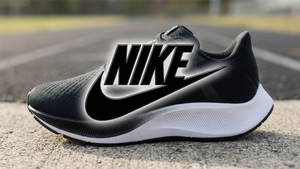Lower cumulative procedure costs at one- and two-years when orbital atherectomy used
Cardiovascular Systems, Inc. (CSI®) (NASDAQ: CSII), a medical device company developing and commercializing innovative interventional treatment systems for patients with peripheral and coronary artery disease, today announced that a new article published in the Journal of Medical Economics reviews the two-year PAD-related health care costs of patients enrolled in the LIBERTY 360° trial.
LIBERTY 360° represents the largest, contemporary real-world experience with various endovascular strategies across the full range of Rutherford Class (RC) patients, including those with critical limb ischemia, the most compromised RC6 patients.
In the article, “Two-year PAD-related health care costs in patients undergoing lower extremity endovascular revascularization: results from the LIBERTY 360° trial” by Elizabeth A. Magnuson, et al., the authors note that among patients with symptomatic lower extremity PAD undergoing endovascular revascularization, initial treatment costs and total 2-year costs varied significantly according to clinical and lesion-level characteristics, as well as symptom burden.
Said Scott Ward, CSI’s Chairman, President and Chief Executive Officer, “Data from the LIBERTY 360° study revealed high freedom from major amputation out to three years (RC2-3, 98.5%; RC4-5, 94.0%; and RC6, 79.9%). And the orbital atherectomy sub analysis of this data indicated high freedom from major amputation (RC2-3, 100%; RC4-5, 95.3%; and RC6, 88.6%) with no additional amputations reported after the two-year visit. These data are especially compelling in the context of cost analyses showing that the durable patient outcomes from the use of orbital atherectomy resulted in lower mean cumulative PAD-related costs one- and two-years after the procedure.”
LIBERTY 360° (OAS RC2-6) 2-Year Costs
Orbital atherectomy (RC2-6; N=503) mean index procedure cost was $11,729 and by two-years the mean costs were $29,474, numerically lower than the overall LIBERTY (RC2-6; N=1189) mean two-year cost of $30,491.
PAD-related costs ($) up to 2 years following the index procedure |
||||||
|
All Patients |
Any Orbital
|
|
|
All Patients |
Any Orbital
|
Index Hospitalization |
11,621 (11,189 to 12,081) |
11,729 (11,165 to 12,443) |
|
Years 1+2 follow-up |
18,870 (17,046 to 20,802) |
17,745 (15,113 to 20,835) |
Year 1 follow-up |
11,741 (10,597 to 12,974) |
10,976 (9,344 to 12,741) |
|
|||
Endovascular procedures |
7,476 (6,730 to 8,263) |
6,911 (5,758 to 8,127) |
|
Endovascular procedures |
11,465 (10,321 to 12,688) |
10,806 8,944 to 12,916) |
Surgical procedures |
1,625 1,218 to 2,041) |
1,698 (1,096 to 2,384) |
|
Surgical procedures |
2,077 (1,616 to 2,569) |
1,987 (1,353 to 2,708) |
Other PAD hospitalizations |
140 (74 to 211) |
115 (34 to 231) |
|
Other PAD hospitalizations |
193 (113 to 278) |
128 (41 to 251) |
Outpatient/ chronic care |
2,501 (2,011 to 3,000) |
2,253 (1,586 to 3,126) |
|
Outpatient/ chronic care |
5,134 (4,041 to 6,253) |
4,824 (3,272 to 6,791) |
Cumulative 1-year |
23,362 (22,110 to 24,623) |
22,706 (20,998 to 24,627) |
|
Cumulative 2-year |
30,491 (28,569 to 32,506) |
29,474 (26,655 to 32,665) |
Magnuson EA, et al. J Med Econ. 2021 April 18:1
Safe Harbor
Certain statements in this news release are forward-looking statements within the meaning of the Private Securities Litigation Reform Act of 1995 and are provided under the protection of the safe harbor for forward-looking statements provided by that Act. These statements involve risks and uncertainties that could cause results to differ materially from those projected, including, but not limited to, actual study results, and other factors detailed from time to time in CSI’s SEC reports, including its most recent annual report on Form 10-K and subsequent quarterly reports on Form 10-Q. CSI encourages you to consider all of these risks, uncertainties and other factors carefully in evaluating the forward-looking statements contained in this release. As a result of these matters, changes in facts, assumptions not being realized or other circumstances, CSI's actual results may differ materially from the expected results discussed in the forward-looking statements contained in this release. The forward-looking statements made in this release are made only as of the date of this release, and CSI undertakes no obligation to update them to reflect subsequent events or circumstances.
About Peripheral Artery Disease (PAD)
As many as 18 million Americans, most over age 65, suffer from PAD, which is caused by the accumulation of plaque in peripheral arteries reducing blood flow. Symptoms include leg pain when walking or at rest. Left untreated, PAD can lead to severe pain, immobility, non-healing wounds and eventually limb amputation. With risk factors such as diabetes and obesity on the rise, the prevalence of PAD is growing at double-digit rates.
Millions of patients with PAD may benefit from treatment with orbital atherectomy utilizing the Stealth 360® and Diamondback 360® Peripheral Orbital Atherectomy Systems, minimally invasive catheter systems developed and manufactured by CSI. These systems use a diamond-coated crown, attached to an orbiting shaft, which sands away plaque while preserving healthy vessel tissue — a critical factor in preventing reoccurrences. Balloon angioplasty and stents have significant shortcomings in treating hard, calcified lesions. Stents are prone to fractures and high recurrence rates, and treatment of hard, calcified lesions often leads to vessel damage and suboptimal results.
About Cardiovascular Systems, Inc.
Cardiovascular Systems, Inc., based in St. Paul, Minn., is a medical device company focused on developing and commercializing innovative solutions for treating vascular and coronary disease. The company’s orbital atherectomy system treats calcified and fibrotic plaque in arterial vessels throughout the leg and heart and addresses many of the limitations associated with existing surgical, catheter and pharmacological treatment alternatives. For additional information, please visit www.csi360.com and connect on Twitter @csi360.
About LIBERTY 360°
LIBERTY 360° is a prospective, observational, multi-center post-market study that enrolled over 1,200 patients at 51 sites across the United States, including 501 patients with claudication (RC2-3), 603 patients with critical limb ischemia (CLI; RC4-5) and 100 patients with the most severe form of CLI (Rutherford 6). The study included any endovascular device FDA-cleared for treatment of PAD. Enrollment was completed in February 2016 and patients will be followed for up to five years.
LIBERTY 360° is among the first PAD studies to investigate patients across the spectrum of symptomatic PAD and will assess numerous parameters including procedural success, rate of major adverse events, duplex ultrasound findings, quality of life, six-minute walk test, wound status, and economic outcomes.
More information about the study design is available at www.ClinicalTrials.gov; identifier: NCT01855412.
Product Disclosure:
Indications: The Stealth 360® PAD System and Diamondback 360® PAD System are percutaneous orbital atherectomy systems (OAS) indicated for use as therapy in patients with occlusive atherosclerotic disease in peripheral arteries and stenotic material from artificial arteriovenous dialysis fistulae.
Contraindications: The OAS are contraindicated for use in coronary arteries, bypass grafts, stents or where thrombus or dissections are present.
Warnings/Precautions: Although the incidence of adverse events is rare, potential events that can occur with atherectomy include: pain, hypotension, CVA/TIA, death, dissection, perforation, distal embolization, thrombus formation, hematuria, abrupt or acute vessel closure, or arterial spasm.
See the instructions for use for detailed information regarding the procedure, indications, contraindications, warnings, precautions, and potential adverse events. For further information call CSI at 1-877-274-0901 and/or consult CSI’s website at www.csi360.com.
Caution: Federal law (USA) restricts these devices to sale by or on the order of a physician.
The Stealth 360® PAD System and Diamondback 360® PAD System received FDA 510(k) clearance. The Stealth 360® PAD System is CE Marked.
View source version on businesswire.com: https://www.businesswire.com/news/home/20210503005494/en/
Contacts
Cardiovascular Systems, Inc.
Jack Nielsen
Vice President, Investor Relations
& Corporate Communications
(651) 202-4919
j.nielsen@csi360.com





